30 Jul 07/30/2021
Common Cutting Tools, Cutting Gloves, and Cutting Glasses
When you think of cutting tools used on a worksite, it’s likely in the context of using these tools to achieve the desired shape and size of a particular workpiece. However, the task of cutting on the job is performed more times than you might think. Consider the opening of a box, snipping a wire, or using scissors to cut paper.

A simple utility knife causes many injuries every year.
Countless settings, such as construction, home improvement projects, and manufacturing require workers to cut some material at some point. Unfortunately for the user performing the cutting, there are risks involved. Hands can be lacerated when handling sharp objects, and eyes can be permanently injured from flying projectiles due to cutting. Both scenarios mean specialized safety equipment is required to avoid severe injury or even death.

This article will dive into common job site materials that often require being cut, safety tips all cutters should follow, and an exploration of the numerous types of personal protective equipment (PPE) users require when cutting.
Cutting Tools Explained

When the average layperson hears the term "cutting tool," they likely think of cutting devices in home and professional settings, things like knives and scissors. However, "cutting tools" in the manufacturing industry have a different meaning. In machining, a cutting tool is any device used to remove some material from a more significant piece. This can be done in many different ways, including by single-point or multi-point cutters. Here are the differences between the two:
Single-Point

Single-point cutting tools contain only one primary cutting edge in the body that engages with material. Examples of single-point cutters include turning tools, shaping tools, planning tools, slotting tools, and boring tools.
Multi-Point

As the name implies, multi-point cutting tools utilize multiple cutting edges to remove material. Heat is distributed more evenly across the blades, allowing the tool to run longer. Examples of multi-point cutters include drilling, grinding, and milling cutters.
The reason why most people think about cutting tools as being everywhere is that they are! Numerous other types of cutting tools are used outside of machine shops.
Types of Cutting Tools

Depending on the job site, any number of different types of material might need to be cut. Roofers and plumbers may need tools to cut metal, but what about a drywaller or a landscaper? There is a wide range of tools available that are designed to cut through just about any material.
Here are some examples of materials that may need to be cut for work to proceed and the tools required for each:
- Acrylic: There are three standard tools used to cut acrylic: power saws, acrylic dowels or blocks, and hand saws.

- Concrete: An essential tool for cutting concrete is a concrete saw.

- Drywall: To cut drywall, contractors use knives, keyhole saws, reciprocating saws, oscillating multi-tools, and spiral saws. Drywall cutting also requires a mechanism for dust collection.

- Glass: If your project involves cutting glass, you will need tools specifically designed for glass cutting. You will want to have a cutting wheel, cutting range, and self-oiler on hand.

- Granite: Cutting granite is a unique challenge, and tremendous skill and precision are needed. Tools for cutting granite include diamond blades, wheels, drills and drill bits, saws, polishers, and grinders.

- Foam: Cutting foam is a different experience and requires completely different tools. To cut foam, workers will use tools like a styro cutter, hot wire cutter, hot knife, utility knife, and a hot wire cutting table.

- Lathe: There are several different kinds of lathes, and not all of them function in the same ways. Choosing the suitable lathe depends on your purpose: turning, boring, chamfering, knurling, parting, thread cutting, facing, grooving, or forming.

- Paper: Within the printing and papermaking industries, workers use numerous sharp tools to manufacture paper and cut brochures and mailers, including knives, blades, and saws. They face sharp edges from the materials moving through the machines.

- Pipes: Pipe cutters are used to trim pipe to the perfect length.

- Plastic: Because plastic composition can vary from material to material, machinists cut plastics using various tools. The main factor is ensuring that the geometry of the tool and planning matches the material.

- Plywood: If you need to cut plywood, you need to become comfortable using a jigsaw or power saw.

- Sheet Metal: Cutting sheet metal is a noisy job that requires the use of hacksaws, tin snips, metal-air shears, angle grinders, cold saws, circular saws, bandsaws, and oxy-acetylene torches.

- Sod:Sod is another material that needs to be cut with its own uniquely designed tool: the sod cutter. Some workers may also use a machete, as shown below, to cut into the sod.

- Steel: Cutting steel is not for beginners. Using a circular saw, one can cut up to about 3/8” thick steel utilizing a ferrous metal cutting blade. For smaller jobs, you can also use a stainless steel grinding disc. A torch, as shown below, is another method for cutting steel.

- Stone: Cutting stone requires some of the same techniques as cutting granite. Choosing the right saw blade means choosing between a circular saw, abrasive saw, or diamond carbide blade.

- Tile: Tile is cut using a specific saw called a tile saw. Workers may also use manual saws, automatic saws, and tile nippers.

- Tree Cutting: A list of 14 tree cutting tools includes chainsaws, shears, loppers, saws, axes, hatchets, and pruners.

- Wood: There are many tools to cut wood one can choose, so it’s essential to understand what you’re cutting and for what purpose. Wood cutting tools include lathes, many kinds of saws, routers, chisels, planes, loppers, and axes.

Safety Required

It's easy to spot the safety concerns associated with cutting tools. Using tools equipped with sharp blades and sharp edges can cause injury and even death when proper safety measures are not implemented. Below, we provide several links to various educational resources around proper safety precautions when cutting. Here are some of the tips found across these sources:
- Always cut away from the body.
- Be sure the material being cut is secured.
- Don't carry sharp tools in your pocket.
- Follow the cutting speed recommended for the material being cut.
- Make sure you're utilizing the correct tool for the job performed.
- Never horseplay around sharp objects.
- Start cutting materials in a square position.
Improper use of cutting tools can lead to personal injury or death. Here are links to some valuable resources around cutting safety:
- Cutting Tool: Safe Use and Selection
- Cutting Safety Tips
- The Best Metal Cutting Tools
- Cutting Tool Safety
Cutting materials is dangerous work; however, following proper safety procedures will go a long way in staying injury-free. When it comes to safety equipment and PPE, you need to have the right gear. That includes gloves to protect your hands and safety glasses to protect your vision.
Cutting Gloves
When you work with cutting tools, it doesn't matter what industry you're in: you are at risk for puncture and cut injuries. Finding the right PPE is imperative. Using cutting tools means you will encounter sharp blades, objects, and edges. These types of hazards can easily cause lacerations, slashes, and nicks. There were over 143,000 hand injuries reported in 2015 by the Bureau of Labor Statistics (BLS), which means you cannot afford to be wearing the wrong safety gear when facing these hazards.
Wearing cut-resistant safety gloves when handling sharp metal will help keep your hands from being lacerated. However, it's important to note that you should never wear a work glove when any moving machinery is operating. There is always the possibility of your glove, and therefore your hand, being caught in the machine. We stress this safety reminder on every work glove page.
Check out our cut-protection resources below.
Cut Glove Catalog
MCR Safety offers an extensive catalog of cut-resistant gloves because we know how important it is for you to find the perfect fit designed for your purpose. Our collection allows you to mix and match different attributes for gloves, including the level of cut resistance, nitrile coatings, or heat resistance. Whatever you need, we provide it.
You can also download our entire cut-resistant glove and sleeve guide here. You'll find product matrices, cut-material insight, and knowledge around cut-resistant scoring levels.
Leather Cut Gloves
Leather gloves are popular because of their durability and flexibility. Unfortunately, your average traditional leather glove offers no natural protection from cuts. Fortunately, recent advancements in technology have allowed leather gloves to protect you from cuts, and we offer more than 15 leather glove styles with cut-resistant features.
A9 Cut Gloves
We highly recommend the A9 glove as one of the best cut-resistant gloves on the market. Check out the features of our A9 gloves!
Thin
Working with some materials requires the use of thin gloves, but cutting tools still pose a risk. That's where our Featherlite styles come in! Below is a look at all of our Featherlite cut-resistant glove options.
Sleeves

Just like our cut-resistant gloves, our sleeves provide you with the options to mix and match what you need based on the job you’re performing and the tools you’re using.
Cutting Glasses
Whenever someone is working with cutting tools, especially when cutting metal, safety glasses must always be worn. Modern metal cutting involves increased cutting speeds and hot temperatures. Hot flying chips and projectiles are often unexpectedly projected from the workpiece during metal cutting. Cutting wood can kick up dust, fragments, and flying debris as well, so it’s essential to keep the eyes protected in all cutting applications.
Dark shaded safety glasses are required every time one is cutting metal. As we've highlighted in our ANSI Z87 article, new lens markings are required on filter shades. W2.0, W3.0, and W5.0 are the different filter levels, with each higher number representing a darker filter. And we've got some great news to share! We've added some new welding and cutting safety glasses to our product lineup!
SR5 Series
The Swagger® SR5 Series are the first cutting glasses equipped with our MAX6® anti-fog coating that provides six times greater anti-fog performance than generic anti-fog safety glasses.
Memphis Series
Our Memphis Series safety glasses feature 23 different lens options. Check out the cutting and welding filter shades!
Don’t forget, you’ll also need a face shield and headgear when grinding metal. We now stock headgear that features a 6X more powerful anti-fog coating to help keep your field of vision clear.
Common Questions

Is there a tool to cut out door hinges?
- A Dremel can be used to cut out a door hinge! This specific household and workshop tool provides you with everything you need to cut door hinges.
How to cut metal without power tools?
- Amateur craftspeople often ask if there are ways to cut metal without investing in expensive power tools. While it can take a lot of time, many metal materials can be cut with a hacksaw.
Are there special tools for cutting PVC?
- Bob Vila's website offers some great tips on cutting PVC pipe for any of your home improvement projects, including plumbing tasks.
Can you cut safety glass?
- Tempered glass can't be cut to a different size after it has been manufactured. The measurements were a part of the glass's fabrication, so there is no option to cut it down to a different size if you discover an error or miscalculation.
Protecting Cutters

No matter what materials you are cutting, MCR Safety wants to protect you. We believe that you deserve safety and protection. The two primary forms of protection – eye protection and hand protection – will help make sure you stay safe from cuts, lacerations, and irritants. We’ve shown you only a small sampling of our hand and eye protection selections, and there are numerous other styles available. Below are quick links to the entire catalog for both product lines.
We welcome any comments, feedback, or suggestions for how we can best protect people at work.
For over 45 years, MCR Safety has proven to be a world leader in gloves, glasses, and garments. Whether it's on the shop floor, an oil rig, a construction site, or shooting outdoors, we are there to provide solutions to workplace (and recreational) hazards. It's all part of our commitment to protect people.
No matter your industry, we have the personal protective equipment you need.

Learn more about MCR Safety by checking out our most recent video. For more information, browse our website, request a catalog, find a distributor, or give us a call at 800-955-6887.
About the Author
Latest Articles






















